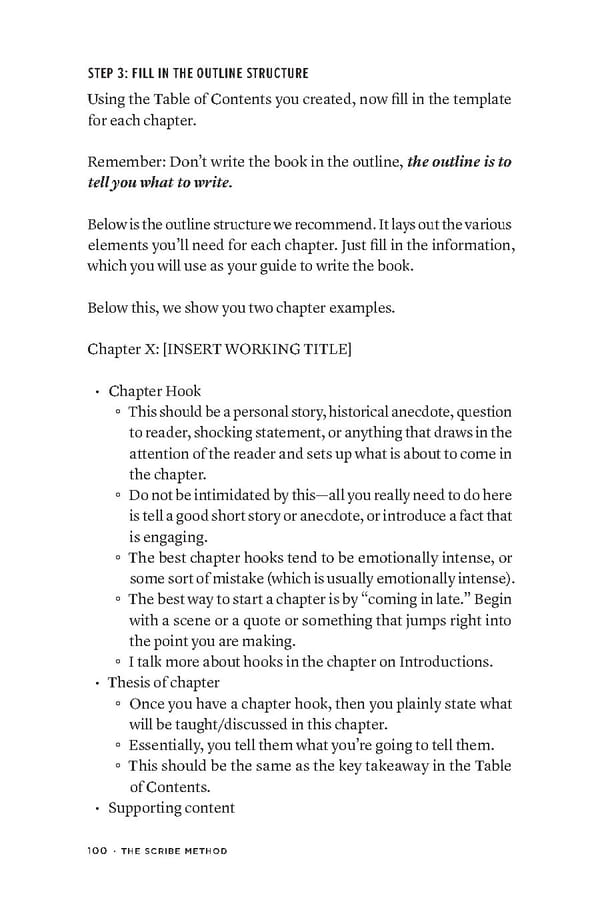STEP 3: FILL IN THE OUTLINE STRUCTURE Using the Table of Contents you created, now fill in the template for each chapter. Remember: Don’t write the book in the outline, the outline is to tell you what to write. Below is the outline structure we recommend. It lays out the various elements you’ll need for each chapter. Just fill in the information, which you will use as your guide to write the book. Below this, we show you two chapter examples. Chapter X: [INSERT WORKING TITLE] • Chapter Hook ◦ This should be a personal story, historical anecdote, question to reader, shocking statement, or anything that draws in the attention of the reader and sets up what is about to come in the chapter. ◦ Do not be intimidated by this—all you really need to do here is tell a good short story or anecdote, or introduce a fact that is engaging. ◦ The best chapter hooks tend to be emotionally intense, or some sort of mistake (which is usually emotionally intense). ◦ The best way to start a chapter is by “coming in late.” Begin with a scene or a quote or something that jumps right into the point you are making. ◦ I talk more about hooks in the chapter on Introductions. • Thesis of chapter ◦ Once you have a chapter hook, then you plainly state what will be taught/discussed in this chapter. ◦ Essentially, you tell them what you’re going to tell them. ◦ This should be the same as the key takeaway in the Table of Contents. • Supporting content 100 · ThE SCriBE METhOD
 The Scribe Method by Tucker Max Page 99 Page 101
The Scribe Method by Tucker Max Page 99 Page 101